Search
Remove Ads
Advertisement
Summary 
Loading AI-generated summary based on World History Encyclopedia articles ...
Search Results

Definition
Haniwa
Haniwa are the unglazed terracotta rings, cylinders, and figures of people, animals, and houses which were deposited at Japanese tombs during the Kofun and Asuka Periods (c. 250-710 CE). The exact purpose of these offerings is not known...
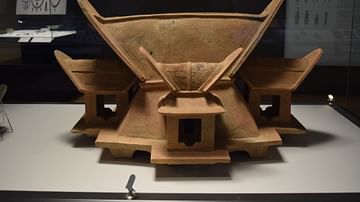
Image
Haniwa House
A terracotta haniwa (tomb marker) in the form of a house. Saitobaru Burial Mounds, Saito-shi, Miyazaki, Japan. Kofun/Asuka Period, 5th century CE, Japan. Imperial Cultural Property. (Tokyo National Museum)
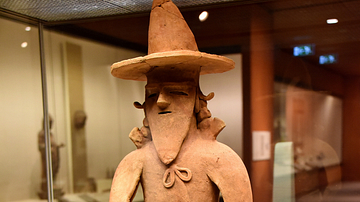
Image
Haniwa Figure of a Chieftain
This haniwa tomb figure is thought to represent a chieftain. He wears a tall wide-brimmed hat, his hair is plaited in a style called mizura, and there is a sword on his belt. It came from Ibaraki prefecture in eastern Japan; it was in this...
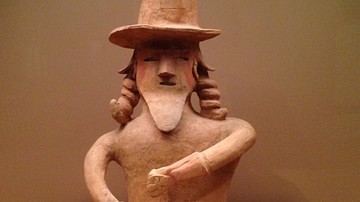
Image
Haniwa in the Form of a Man
Haniwa from the Kofun period of Japan (250-538 CE), as displayed in the San Francisco Asian Art Museum.
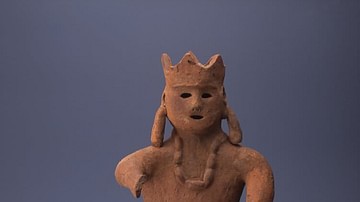
Image
Haniwa, Kofun Period
Terracotta Haniwa figure from Kofun Period Japan.
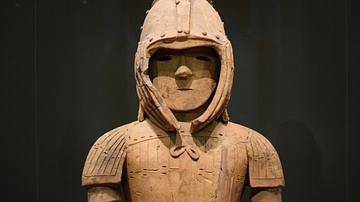
Image
Haniwa Warrior
A haniwa (tomb marker) in the form of a warrior wearing Keiko armour. Iizuko-cho, Ota-shi, Gunma, Japan. Kofun Period, 6th century CE. National Treasure. (Tokyo National Museum)

Image
Haniwa Horse
A terracotta haniwa (tomb-marker) in the form of a horse. Asuka Period, 6th century CE, Japan. (Los Angeles County Museum of Art)

Image
Haniwa Warrior with a Tattoo
This is the top half of what was originally a complete figure. The warrior's face is partly painted red, he wears his hair in plaits (one is missing), and the protective gauntlet on his forearms may be part of an armour suit. From the 400s...
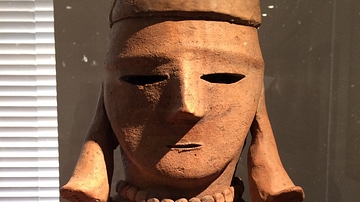
Image
Haniwa Figurine
A terracotta Haniwa figurine. Gunma Province, Japan, 6th century CE. Such figures were placed either atop or alongside burial mounds. (Musée Guimet, Paris)

Image
Monkey Haniwa
A terracotta haniwa (tomb marker) in the form of a monkey. 6th century CE, Kofun/Asuka Period. From Dainichizuka Tumulus, Okinosu, Namegata-shi, Ibaraki, Japan. 'Important Cultural Property'. (Tokyo National Museum)